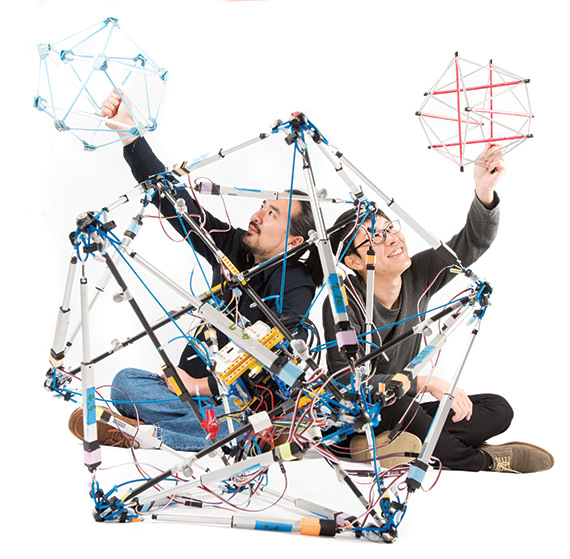ME Professor Alice Agogino and BEST Labbers in the Special Design Issue of Berkeley ENGINEER, Spring 2015
“One faculty member is professor of mechanical engineering Alice Agogino, who will teach her classic course in Introduction to Product Development to a hundred students this fall in Jacobs Hall’s largest studio. Agogino introduced the concept of design thinking to the College of Engineering shortly after she came to Berkeley in 1984 — years before the term itself had entered the language.
She recalls being asked to create a seminar in design theory and methods and reaching out to “the inquiry disciplines, the creative arts, rhetoric,” and many other departments across the campus. “It was the intellectual foundations of how they framed design that I wanted to understand, where they intersected. What could we learn from each other?”
Among those whose ideas impressed her was Horst Rittel, a professor in the College of Environmental Design. In 1973, Rittel had introduced the term “wicked” to describe certain problems, the very nature of which makes them hard to define, much less to solve creatively and effectively.
Some design problems are tame (tame problems have rules and unambiguous resolutions, like a game of checkers); Agogino says they’re routine and can often be handled by automation. “Designers should be working on the hardest problems, the wicked problems.”
The Tensegrity Robot project was featured as a case study with a fab photo of Mechanical Engineering graduate students Lee-Huang Chen and Kyunam Kim (upper right). Excerpt: If a ball had bones, the resulting motion would probably resemble what a moving tensegrity robot looks like. Researchers call the motion “controlled punctuated rolling.” Agogino and her students are developing rapid prototyping kits and investigating other ways of deploying tensegrity robots, including for healthcare and education applications. “We are developing an open innovation approach to our rapid prototyping kit because we would like the designs and the do-it-yourself instructions to be available to other researchers and educators,” Agogino says. The NASA Tensegrity robot project was included as a case study with a photo of Lee-Huan Chen and Kyunam Kim.

